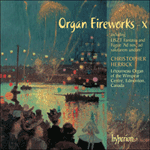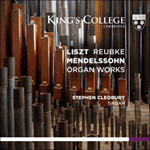
Welcome to Hyperion Records, an independent British classical label devoted to presenting high-quality recordings of music of all styles and from all periods from the twelfth century to the twenty-first.
Hyperion offers both CDs, and downloads in a number of formats. The site is also available in several languages.
Please use the dropdown buttons to set your preferred options, or use the checkbox to accept the defaults.

from notes by Relf Clark © 2004
extrait des notes rédigées par Relf Clark © 2004
Français: Isabelle Battioni
aus dem Begleittext von Relf Clark © 2004
Deutsch: Viola Scheffel
 Organ Fireworks, Vol. 10 Organ Fireworks, Vol. 10‘Herrick portrays it as a persuasive, powerful and utterly compelling entity in which every note holds the listener in thrall, while this huge 96-stop ... ‘He brings enthusiasm and boundless energy to whatever repertoire he tackles. Apt registrations, dexterous clarity, and phrase-making metrical verve i ...» More |
 Liszt, Reubke & Mendelssohn: Organ Works Liszt, Reubke & Mendelssohn: Organ WorksPerforming three popular virtuosic works for the organ, Stephen Cleobury demonstrates the power of the great Harrison & Harrison organ set within the chapel of King’s College, Cambridge.» More |

